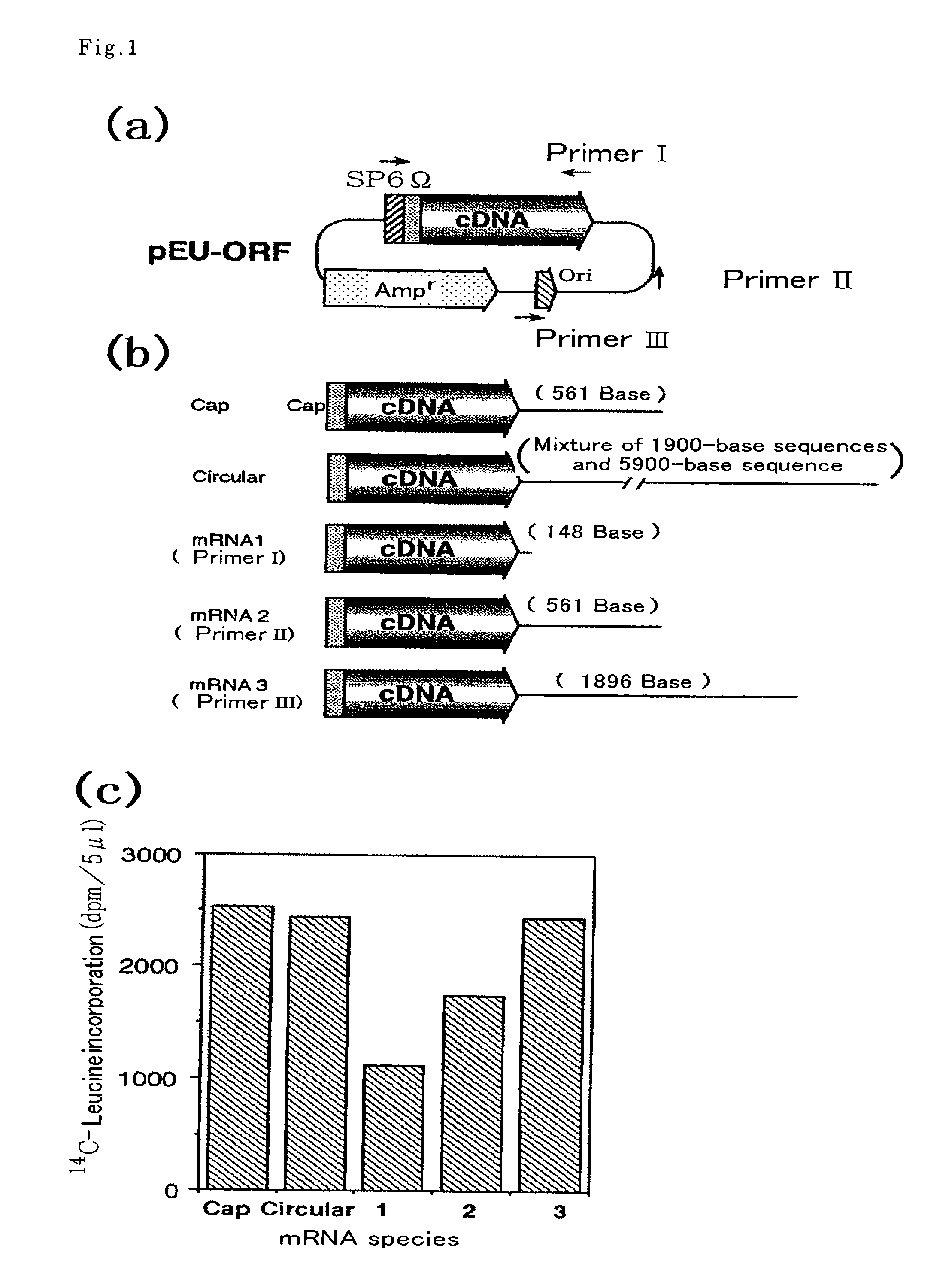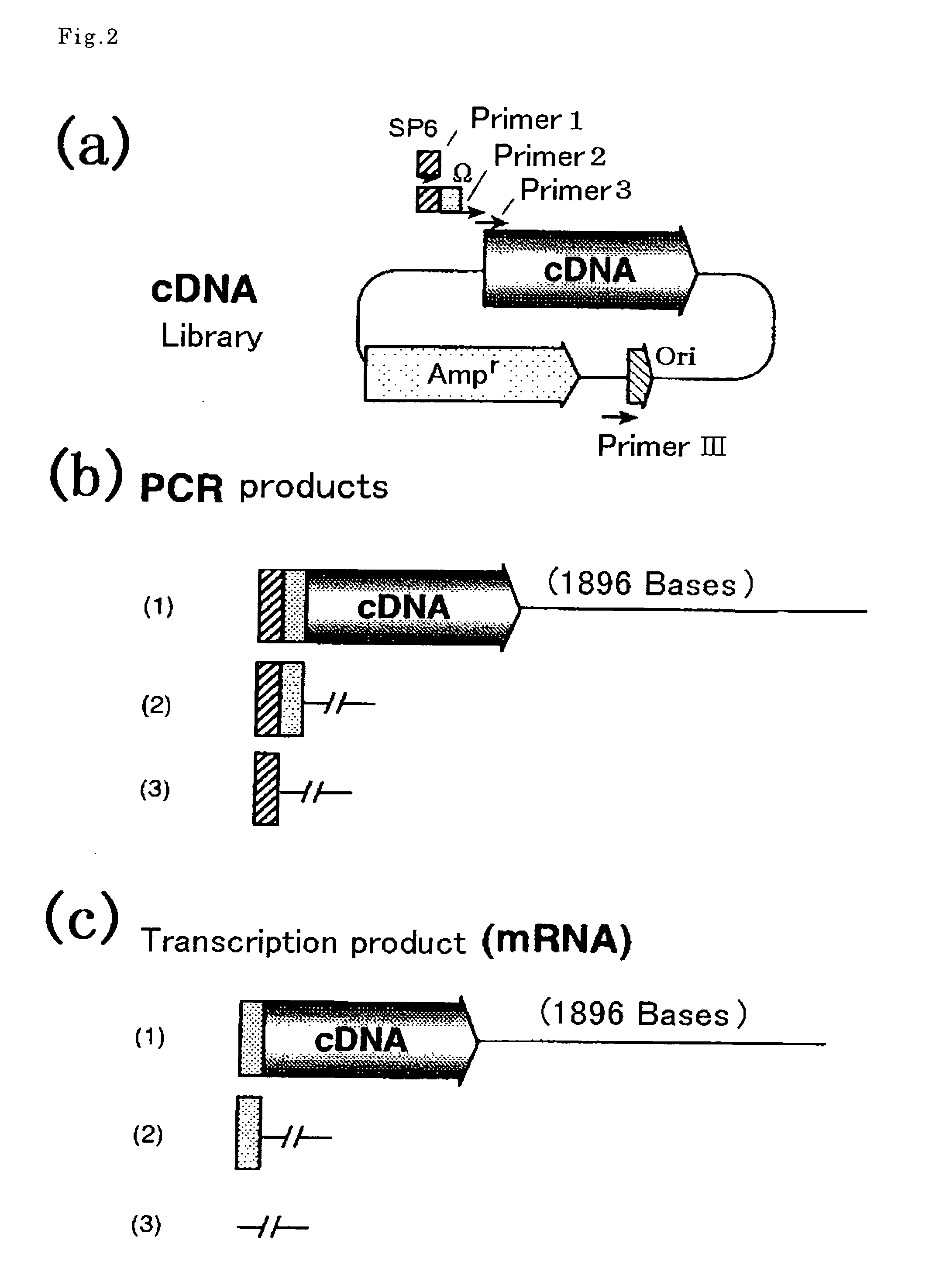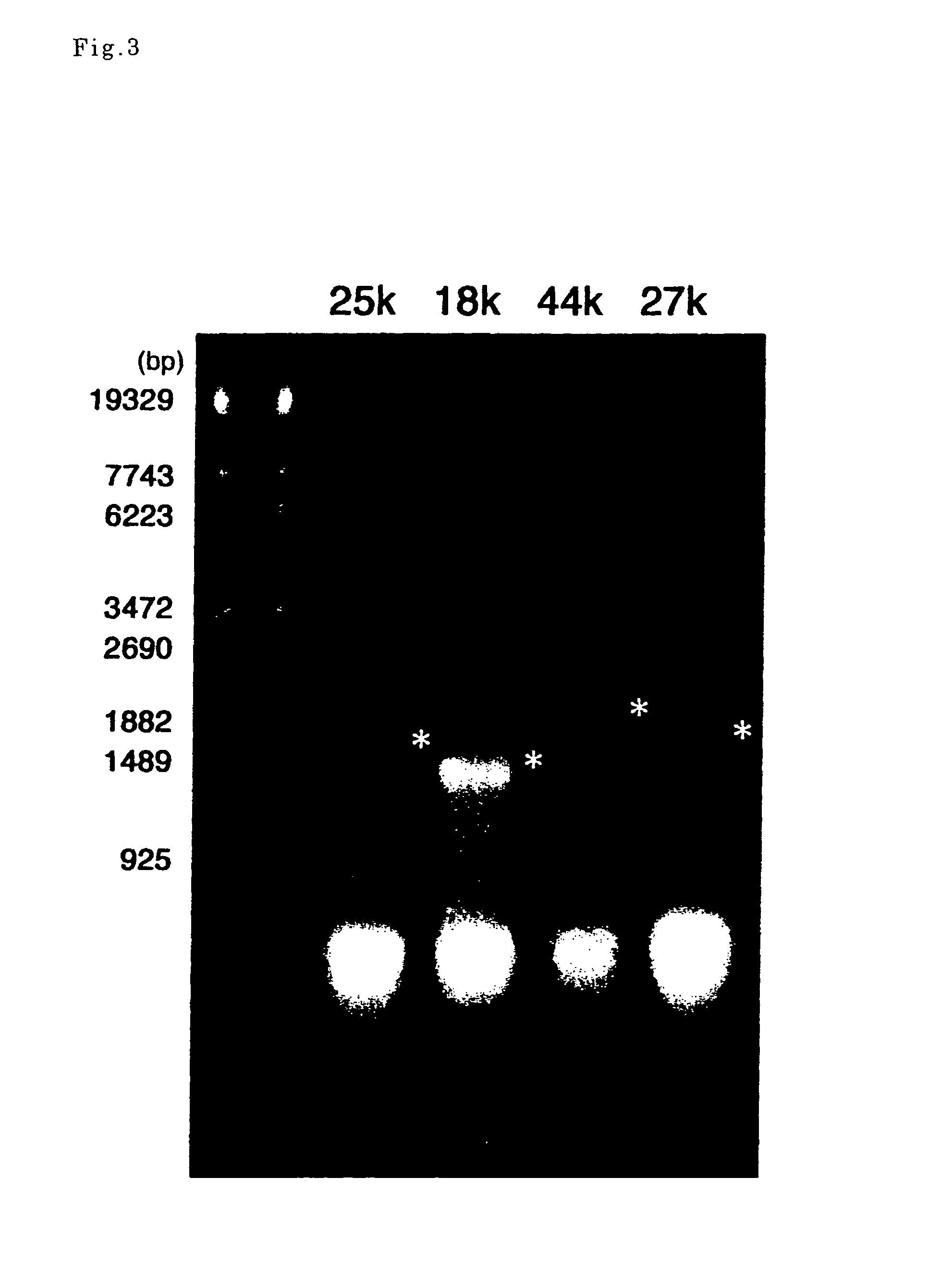Transcription template for cell-free protein synthesis and method using the same
a cell-free protein and transcription template technology, applied in the field of transcription template for cell-free protein synthesis and the same, can solve the problems of low protein synthesis efficiency, inability to use cell-free protein synthesis system as a practical method for producing a protein, and significant reduction in the quality of cell extract during storage, so as to prolong the life of the translation reaction
- Summary
- Abstract
- Description
- Claims
- Application Information
AI Technical Summary
Benefits of technology
Problems solved by technology
Method used
Image
Examples
example 1
Designing a Primer for Constructing a Transcription Template and Constructing an mRNA Having a High Translation Template Activity
(a Method for Constructing a Transcription Template Paying Attention to the 3′-End Untranslated Sequence Synthesis of an mRNA)
[0114]A transcription template was constructed using the PCR method for obtaining an mRNA that is effective for enhancing the translation template activity, has the shortest 3′-end untranslated structure, and has a high translation efficiency.
[0115]A template for the PCR was prepared according to conventional methods by integrating a jelly fish GFP gene into pEU (WO01 / 27260) developed as a plasmid (FIG. 1a) for the wheat embryo cell-free protein synthesis system illustrated in FIG. 1a. Into this plasmid, the followings are inserted in this order:
1) a promoter sequence of SP6 RNA polymerase upstream of the 5′-end,
2) Ω sequence of tobacco mosaic virus (TMV) that is the translation initiation reaction sequence,
3) GFP gene,
4) the replic...
reference example 1
Designing Primer for Constructing Transcription Template and Constructing Transcription Template by PCR
(a Method for Constructing a Transcription Template by the Conventional Method)
[0137]Primers for the PCR were constructed for obtaining, by the PCR method, a transcription template for an mRNA having 5′- and 3′-end untranslated structures.
[0138]Concerning a 5′-end untranslated structure of an mRNA, adding the following sequence to the mRNA is very effective for enhancing the efficiency of a cell-free protein synthesis reaction:
1) a base sequence derived from alfalfa mosaic virus (AMV),
2) Ω sequence of tobacco mosaic virus (TMV),
3) AMV-Ω sequence obtained by serially linking these, and
4) 29-base Ω sequence obtained by shortening the Ω sequence.
TMV Ω sequence selected from among these 5′-end untranslated structures was used as the
5′-end untranslated sequence, and the 1,896 bases shown in Example 1 above were used as the
3′-end untranslated sequence (see FIG. 1).
[0139]First of all, the...
example 2
Designing Primers for Constructing an Efficient Transcription Template and Constructing an Efficient Transcription Template by the PCR
(A method for Constructing a Transcription Template by Paying Attention to the RNA Promoter Sequence of the Transcription Template)
[0144]Primers effective for constructing, by the PCR method, an mRNA transcription template having a high translation activity having a 5′-end untranslated sequence that can be used for a cell-free protein synthesis system without isolating an mRNA having an objective size after the transcription reaction are not obtained by the method for designing primers according to the conventional method shown in Reference Example 1. Therefore, based on the principle for adequately utilizing properties of the RNA polymerase, i.e., the fact that the RNA polymerase recognizes promoter structure having a complete base sequence but does not recognize one having an incomplete base sequence, the effective primers were designed and prepared...
PUM
| Property | Measurement | Unit |
|---|---|---|
| time | aaaaa | aaaaa |
| molecular weights | aaaaa | aaaaa |
| molecular weights | aaaaa | aaaaa |
Abstract
Description
Claims
Application Information
 Login to View More
Login to View More - R&D
- Intellectual Property
- Life Sciences
- Materials
- Tech Scout
- Unparalleled Data Quality
- Higher Quality Content
- 60% Fewer Hallucinations
Browse by: Latest US Patents, China's latest patents, Technical Efficacy Thesaurus, Application Domain, Technology Topic, Popular Technical Reports.
© 2025 PatSnap. All rights reserved.Legal|Privacy policy|Modern Slavery Act Transparency Statement|Sitemap|About US| Contact US: help@patsnap.com



